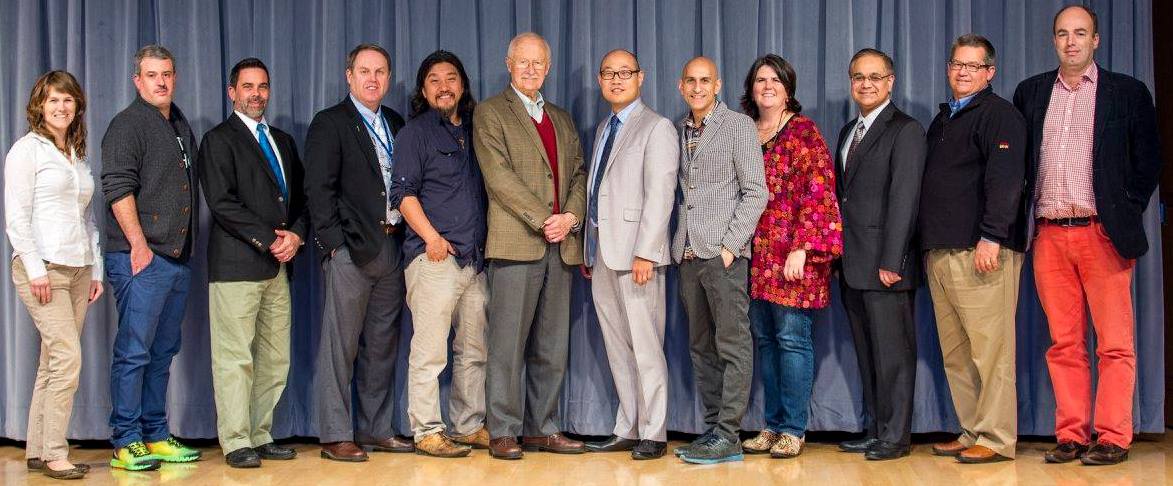Neurogastronomy: A Flavorful Awakening in the Scientific Community
By Sophie Schwinn
What do you get when you combine the expertise of world class chefs, medical doctors, neuroscientists, agricultural scientists, and lovers of food? Why, the Inaugural Symposium of The International Society of Neurogastronomy, of course! The International Society of Neurogastronomy (ISN) held its first conference on November 7th in Lexington, KY, drawing speakers and attendees from across the country, as well as Canada and the UK.
Neurogastronomy is a very young discipline – the term was coined in 2006 by Dr. Gordon Shepherd — so every session at the symposium brought something completely new to the table. Chefs talked about the importance of making healthy food available to those who need it most and of simply making healthy food taste good. Clinicians spoke about the need to overhaul the food systems in our hospitals. They pointed out that patients can’t thrive by eating tasteless food on plastic trays when what they really need is food that tastes great, brings them joy, and makes them want to be healthy again. Bench scientists shared their findings about how our sense of flavor is  created in the brain and how our other senses can influence our sense of taste. Agricultural scientists contributed information on how they could provide better quality food to chefs by implementing their new research findings as well.
created in the brain and how our other senses can influence our sense of taste. Agricultural scientists contributed information on how they could provide better quality food to chefs by implementing their new research findings as well.
Several speakers also shared personal stories about loved ones battling illness, especially cancer, and how diet was a key component in their treatment. Clinicians shared the struggles their patients face with extreme treatment plans. Some examples include the success of the ketogenic diet in treating epilepsy and the extreme difficulty of maintaining it, the challenges of chemotherapy, which essentially destroys the patient’s sense of flavor, and the struggle to increase appetite in patients in memory care who have diminished taste and difficulty eating the bland hospital food. Chemotherapy was an ongoing theme, with discussions ranging from whether neuroscientists could uncover more about why it causes an overwhelming metallic taste, to whether chefs can come up with a way to make that metallic flavor palatable, to how we can help chemo patients deal with constantly changing taste aversions.

The progress we could make just by facilitating this interdisciplinary collaboration is astounding. One very basic example was a recent finding that simply serving food on a blue plate can lead to increased appetite in dementia patients because the greater contrast between the food and the plate makes it appear more appetizing. This may seem like an insignificant detail, but for those who have a loved one wasting away in the hospital due to lack of appetite, it’s a ground-breaking discovery!
 After the conference sessions were over, the lecture hall was abuzz with interdisciplinary conversations. Hospital nutritionists were thanking scientists for sharing their work and discussing how they could implement new findings in their practice right away. Chefs were meeting with scientists to see how they could help facilitate more research and swapping business cards with doctors to start getting food that actually tastes good into hospitals. Scientists were talking with clinicians about their biggest research needs. ISN’s first symposium was an incredible first step to getting the latest scientific findings into the right hands so they can make a positive difference in people’s lives.
After the conference sessions were over, the lecture hall was abuzz with interdisciplinary conversations. Hospital nutritionists were thanking scientists for sharing their work and discussing how they could implement new findings in their practice right away. Chefs were meeting with scientists to see how they could help facilitate more research and swapping business cards with doctors to start getting food that actually tastes good into hospitals. Scientists were talking with clinicians about their biggest research needs. ISN’s first symposium was an incredible first step to getting the latest scientific findings into the right hands so they can make a positive difference in people’s lives.